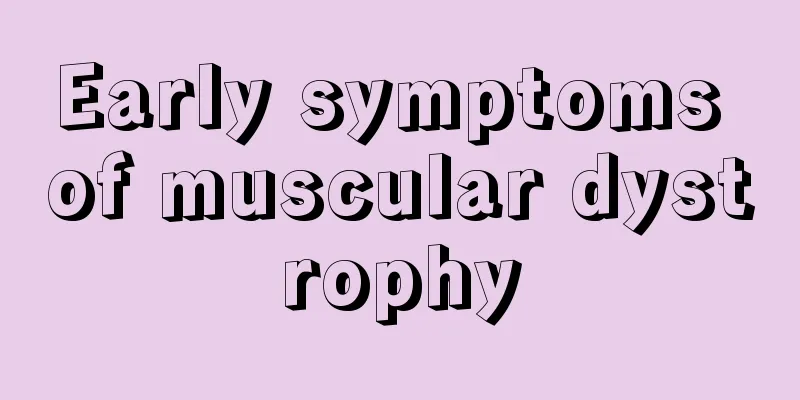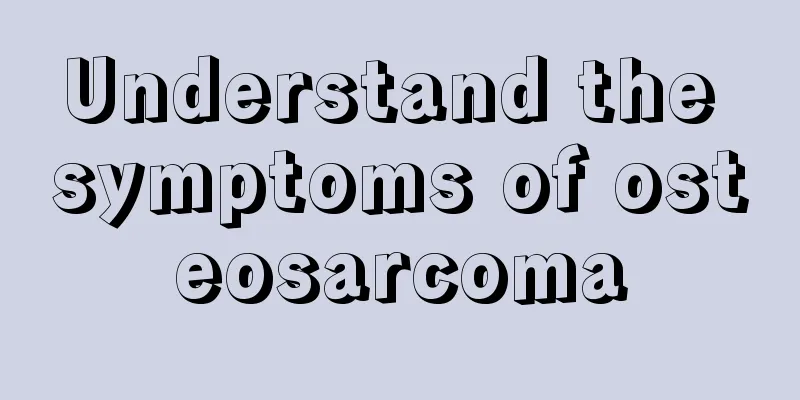Early symptoms of muscular dystrophy

|
In daily life, we must develop good living habits and eating habits. We should eat more foods that help enhance the body's immunity. Once the body's immunity is low, it will be very easy to suffer from some diseases. Muscle weakness is a disease caused by low immunity. After suffering from this disease, the patient will not be able to control his expression, speech, swallowing and other functions normally. Question 1 Mechanism of muscle weakness: In 1672, Dr. Thomas Willis of Oxford, England, reported the first case of myasthenia gravis (MG). The first case of myasthenic crisis was described by Sameul Wiks in 1877. In 1879, Erb described in detail the clinical manifestations of three cases of MG and emphasized the fluctuating nature of symptoms. In 1895, Jolly officially named the disease "pseudoparalytic myasthenia gravis". In 1901, Laquer reported that patients with MG had thymic changes. In 1939, Boston Blalock reported a 19-year-old female patient with MG and thymoma. Her symptoms improved significantly after thymectomy. In 1944, he reported 20 effective cases. Later, thymectomy was used as a routine treatment for MG, and it was found that the effect was better in non-thymoma patients than in thymoma patients. In 1960, Simpson proposed that the pathogenesis of MG was related to immunity, and began to use adrenal cortical hormones, cellular immunosuppressants, antithymocyte globulin and plasma exchange to treat it, with good results. After 1970, when α-bungarotoxin was used to study this disease, it was truly clear that the lesion site of MG is at the acetylcholine receptor (AchR) on the postsynaptic membrane of the neuromuscular junction. Damage causes conduction disorders at the neuromuscular junction, leading to skeletal muscle weakness and fatigue. However, in a small number of patients (8%), no immune abnormalities have been found, and the severity of the disease is not entirely parallel to the degree of immune abnormalities. Anti-thymus and anti-muscle antibody globulins can also be found in some thymoma patients without myasthenia gravis, and no definite anti-neuromuscular junction antibodies have been found. These facts do not seem to be completely explained by autoimmune diseases. Therefore, the relationship between autoimmunity and this disease still needs further study. Since the patient's postsynaptic musculature is as sensitive to locally applied trace amounts of acetylcholine as the postsynaptic musculature of normal people, microelectrode studies of the patient's isolated intercostal muscles found that the average amplitude of their end plate potential was lower than normal. Therefore, it is speculated that the disorder of neuromuscular nerve impulse transmission in this disease does not occur postsynaptically, but mainly exists presynaptically, caused by the synthesis or storage disorder of acetylcholine. The number of acetylcholine molecules contained in the synaptic vesicles at the nerve fiber endings is significantly reduced, about 1/5 of that in normal people.Question 2 Regarding the mechanism of RAS and myasthenia symptoms, the author believes that: normal motor nerves are the axons of the anterior horn neurons of the spinal cord, ending at the muscle fibers with a special motor end plate. A nerve fiber branches continuously when approaching the end point. Each anterior horn cell branch can reach 100 to 200 branches distributed on the muscle fiber end plate. The end plate is a short, thick and irregular motor end plate with terminal branches of synapses. The endomysium at the end plate has many folds forming depressions, on which there are many acetylcholine receptors and many vesicles storing acetylcholine. Ischemia of the frontopontine fascicle affects the motor fibers of cranial nerves III-XII, resulting in weakness of the motor muscles of the head and face; ischemia of the corticospinal tract affects the motor fibers and anterior horn cells of the spinal cord below the cervical spine, resulting in weakness of the neck muscles and limb muscles. When the RAS is treated by manual repositioning, the ischemia of the frontopontine tract, corticospinal tract and their motor nerve margins is healed, and muscle weakness improves or disappears. Symptoms such as ptosis, dysphagia, and dyspnea caused by weak intercostal muscles can be improved after treatment. Some symptoms can be effective after only one treatment. Generally, about 10 to 20 treatments are required to achieve complete reduction of the axis vertebra and improvement or disappearance of symptoms. |
<<: The best way to treat astigmatism
>>: Laser treatment for presbyopia
Recommend
Follow these four points to avoid lung cancer recurrence
How to prevent lung cancer from recurring and met...
Anti-inflammatory for vasculitis
Vasculitis is a very common disease in the human ...
What causes sweating on the soles of feet after moxibustion
Moxibustion on the soles of the feet is a common ...
A scientific method to quickly sober up
Because there are many harmful consequences cause...
The reason for jaw dislocation is actually like this
Jaw dislocation is a very common phenomenon in li...
What is the cause of fatigue and drowsiness
Fatigue and drowsiness are very common in life. F...
How to prevent colon cancer caused by constipation
The reason why constipation causes colon cancer i...
What are the benefits of hot water fumigating eyes
The hot water we just boiled is usually 100 degre...
Elbow pain after fitness
Although our economic conditions are getting bett...
Causes of throat diseases caused by thyroid cancer
Thyroid cancer is a malignant tumor that originat...
Relapse of subacute thyroiditis
The thyroid gland is an organ that secretes thyro...
Head scraping technique
Head scraping is a traditional Chinese medicine m...
How to care for hair after perming and dyeing
In pursuit of fashion and good looks, modern peop...
Is sinusitis hereditary?
Because industrial pollution is particularly seri...
Experts introduce effective surgical treatment methods for bladder cancer
Among the many methods of treating bladder cancer...









